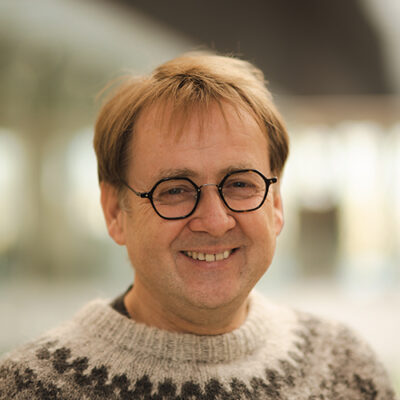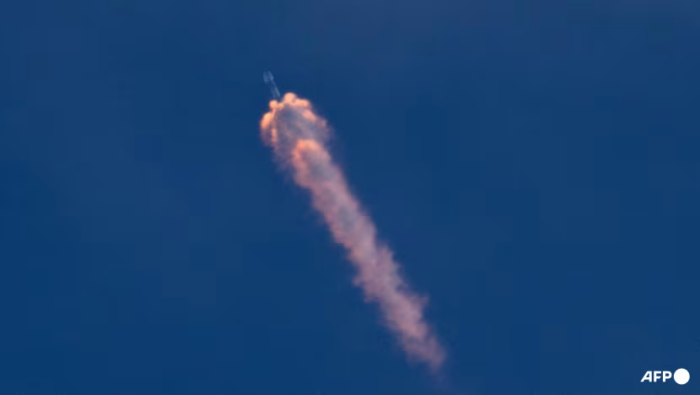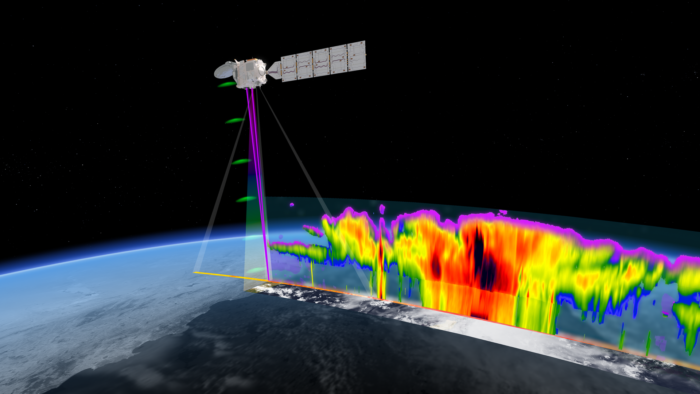The Netherlands is now able to make a big impact on the inventory of the greenhouse gas methane released into the atmosphere by humans. And consequently, in the understanding of where we can most rapidly address this worldwide. Atmospheric scientist Jochen Landgraf, principal investigator for the TANGO mission, knows what we need to do, why now is the time, and why especially the Netherlands should do it now.
Lees de Nederlandse versie op de website van SRON
Landgraf works for SRON Netherlands Institute for Space Research. SRON is one of the partners in the Dutch Clear Air consortium, which knows how to map problems with climate, air quality, and biodiversity worldwide. Other partners include KNMI, TNO, and TU Delft.
Landgraf learned the intricacies of atmospheric science from Nobel laureate Paul Crutzen, who uncovered the chemistry behind the hole in the ozone layer.
Nobel Prize
“His work allowed us to understand how to start recovering the ozone layer,” Landgraf says. “And it also gave us clearer understanding of the role of methane and nitrogen dioxide in the lower layer of the atmosphere.”
Crutzen also coined the term “anthropocene” for the current geological epoch, in which humans affect the earth’s system. He described in his models the “nuclear winter”: the total darkness and drastic cooling of the earth that would follow if nuclear war were to occur. Landgraf: “If he was on to something, you could see it in his eyes. It was a joy to work for him. He required a lot of his people, but his scientific curiosity inspired me tremendously.”
Another big step
Crutzen may no longer be alive, but today, too, scientists he inspired can make great strides to limit disruptive developments in the Earth’s system. Landgraf has been working for 30 years now to understand better and better what is actually occurring in the atmosphere.As principal investigator for the TANGO mission, he now brings together Dutch knowledge and expertise for measuring carbon dioxide, nitrogen dioxide, and methane. (CO2, NO2 and CH4). This will give global decision makers detailed insight into the emission of greenhouse gases by humans.
Methane is a time-bound greenhouse gas
As principal investigator, Landgraf is bringing with him a lot of knowledge of space mission preparation, in particular for missions to observe methane. “What methane actually does in the atmosphere is to trap heat radiation, which warms the earth: the greenhouse effect. Since pre-industrial times, the Earth has warmed 1.28 degrees Celsius. About one degree is due to CO2 and 0.3 degree is due to methane, CH4.” So, we must reduce CO2 emissions. “But also methane emissions,” says Landgraf.
“Because that’s where we can make rapid strides.” Methane stays in the atmosphere for 10 years until it spontaneously decomposes, he explains. “In the case of CO2, this is 1,000 years. This means that via methane, you can make a huge impact on the greenhouse effect even in the short term.”
For example, in the fossil industry, he outlines. There, it is released into the atmosphere as an unused byproduct of fuel extraction. “Reducing these methane emissions costs little to nothing”, Landgraf says. “You can capture it and use it. It is the main component of natural gas, which is comprised of four-fifths methane.”
Wetlands, agriculture, and fossil industry
The first methane measurements with a satellite, 20 years ago, gave atmospheric scientists an unprecedented view on a global distribution of this trace gas. Landgraf: “SCIAMACHY, launched in 2003, with a large Dutch contribution, could see emissions from wetlands for the first time from space.” An estimated 30% of methane emissions to the atmosphere come from wetlands, Landgraf says.
Then in 2009, the Japanese mission GOSAT was launched, followed in 2017, by the Dutch instrument TROPOMI, the “eye” of the European satellite Sentinel-5p. Wetlands are a natural source of methane in the atmosphere. However various human activities combined are responsible for the remaining 70% of methane emissions into the atmosphere. For example, agriculture, the oil and gas industry, and landfills, Landgraf says.
TROPOMI boosted new techniques to determine methane emissions
“For tracking human emissions, TROPOMI really became a gigantic eye-opener,” says the scientist. “With TROPOMI, for the first time, we could see man-made emissions of methane unmistakably reflected as plumes on the world map. For example, we found the atmospheric footprint of blowouts, or explosions at oil and gas extraction sites. With those distinct plumes, we were able to improve our models so that we could trace back much more accurately, with much greater certainty, what man-made emissions must have occurred there.”
Seeing the rest of human induced emissions
TROPOMI can see plumes from so-called “super-emitters”: human sources that emit at least 100 kilotons of methane a year. “But that’s the tip of the iceberg of the total emissions in which humans are involved. Now we also want to see the medium and smaller emissions caused by humans,” Landgraf says. TANGO can look down to Earth with a 300 by 300 meters resolution. Therefore, it can richly complement, what the large methane measuring missions such as Sentinel-5p/TROPOMI and successor Sentinel 5 cannot pinpoint in detail. And this is valuable information for the green transition
Fair comparison
“TANGO consists of two small satellites, each with a size of two buckets. That’s as big as they get,” says Landgraf. These small satellites will allow the Netherlands to take the next big step in atmospheric science. And that is to provide the world with precise insight into medium- and small-sized methane plumes caused by humans, measured in the same manner everywhere, with public data that can be accessed by everyone.
“This is very important if you agree to reduce emissions together, as countries are now committing to the Methane Pledge and the Green Deal. If you want to be able to hold each other accountable to agreements, your measurements must be mutually comparable, verifiable, and transparent. Moreover, TANGO can also monitor the effect of agreements down to the plant level.”
Just the right time
The time is just right for the Netherlands to make that impact. Landgraf and colleagues proposed TANGO as an ESA Scout mission. That’s a new set of future ESA missions for which science and industry can jointly submit proposals. Scout missions take three years to go from the drawing board to space and have a modest budget. Such a budget is feasible for a smaller country like the Netherlands, while the knowledge and infrastructure available through experiences such as TROPOMI are also at an extraordinarily high level.
Why is the Netherlands capable of this?
To see the smaller methane plume clearly and interpret it properly, many areas of expertise must come together. From developing the technology and the instrument itself, to preparing the processes that convert the measurement data into an understanding of human emissions. The Netherlands is the base of parties that are truly world leaders in all these areas of expertise.
Building an instrument for space
“We can’t directly see methane in the observations but the instrument measures sun light reflected by the earth’s atmosphere,” Landgraf says. “A methane spectrometer compares incoming infrared radiation from the sun with outgoing infrared radiation. And in the comparison, light of certain infrared colors is missing. The absence of those colors reveals the presence of methane that the infrared light has encountered in the atmosphere.” Compared to the overall concentration of methane , a small manmade emission plume gives but a tiny difference in the measured light, Landgraf says. “The fact that we can distinguish that from 500 kilometers altitude is simply super fascinating.”
TANGO can tilt slightly during an overflight, keeping the eyes focused on interesting targets. As a result, the tiny variations stand out more clearly. Which targets are worth the longer stare will be determined by scientists based on global inventories. “And if other missions see something suspicious, but not quite sharp enough, TANGO can take a detailed look at that.”

Ground segment
Measurement of infrared spectra th is only one part of the puzzle. Setting up a “ground segment” typically is a big job in space missions. “To deduce methane concentrations from infrared measurements, you have to write a computer model that converts the measurements into a usable data product,” says Landgraf. In the Netherlands, this process of writing models takes place at the highest level.
“You have to make the computational model, in other words retrieval algorithm, in such a way that it will always work. All possible bugs and crashes have to be ironed out before the instrument goes into space. The computing models need to be well-developed, and they must run autonomously.”
Computational models that can convert the measured methane concentrations into estimated emissions demand just as much excellence. “That is the so-called inverse modeling. For a truly reliable conclusion, the algorithms take into account all sorts of phenomena that may have influenced the measurement, such as weather and cloud cover, or differences in reflectance between the forest or the desert.”
Dutch expertise chain for all aspects
For the development of the TANGO mission, the Netherlands has the research and development expertise of SRON, TNO, and ISIS Space at its disposal. For the translation to methane concentrations on a map, and for their interpretation into estimated emissions, the Netherlands can rely on scientists at SRON and KNMI. They are capable – and this really is top-level work – of preparing the retrieval algorithm and the inverse modeling for the much sharper detail that will come to us from TANGO.
An upside of the Netherlands for this task, is that the instrument groups, atmosphere groups, and industry already know each other’s expertise very well. “We value each other very much and we enjoy to working as one team. We know where to find each other. “ This goes for the partners within the TANGO consortium, but also for a whole network of partners beyond that”, says Landgraf. “Whether it’s about where to get the right telescope mirror or about who wrote the best model so far for smaller plumes.”
Influence and value
The Netherlands now can make the TANGO mission an entirely Dutch mission, which will have great influence and value on what the world will do to reduce methane emissions. Member states of ESA will decide in 2024 whether to adopt TANGO as a Scout mission. The Netherlands has already earmarked the contribution for the instrument. Additional funding will also be required for the data processing and the scientific work carried out with it.
Landgraf is convinced that the Netherlands will rise to the challenge. “It is a huge opportunity to make the knowledge we have built up in the Netherlands over the past 30 years available to others. If we don’t move forward now, we will lose the expertise and reputation we have built up with the missions before this.”
Responsibility
Above all, Landgraf also thinks providing this insight if you can, is a responsibility that cannot be ignored. “We have to do something, or things will seriously get worse. Don’t underestimate how profound the climate crisis is going to be. It is a global problem, and it is going to happen. Using satellites, we can trace greenhouse gas emissions as a first step to reduce them. That way, we can mitigate global warming somewhat, and we can try to channel it. For this, all countries have to take responsibility, and richer countries have an even greater responsibility.”




